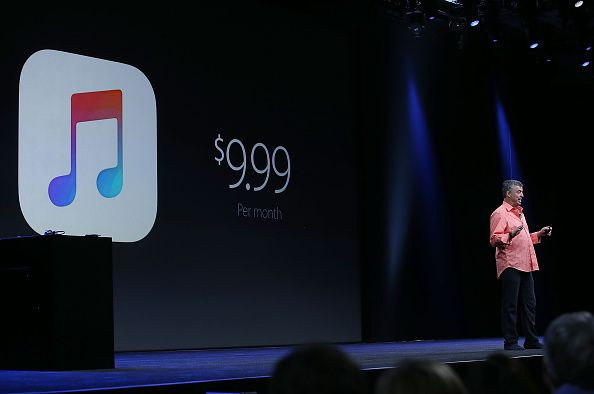Apple Music Is Full Of Design Flaws That Are Driving Users And Experts Nuts
Here's Why That's A Good Thing - And A Bad Thing

The world’s most hotly anticipated streaming music service is finally here, but it took all of five minutes for people across the country to get angry with it. Within minutes of Apple Music’s launch on June 30, tweets started cropping up about how the service doesn’t make sense to them:
Does the OS X not get @apple music?? I'm so confused, LOL, they made this kind of vague.
- Chris Powers (@cpowers) June 30, 2015I'm already super confused with Apple Music...
- əəsʎɐʞ (@_Lokahi) June 30, 2015In and of itself, this is not surprising. Every digital service, including all of Apple Music’s competitors, has flummoxed some of its earliest users. But Apple, despite its reputation as an unsurpassed design powerhouse, has stumbled badly on products before. For every iPhone, there is a Pippin. For every iTunes, there is an Apple Maps. And in Apple Music, the world’s biggest digital music brand has set out one of the most complicated products it’s ever launched.
Lean In? Or Lean Back?
By Apple standards, there is a lot going on in Apple Music. In addition to its catalog of music available to stream, Apple Music integrates with each user’s library of iTunes downloads, offers music videos, multiple kinds of radio and Connect, a kind of social stream that gives artists the chance to upload music and social media content directly to fans that are following them.
It was enough to bamboozle the veteran technology columnist Walt Mossberg, who called the service “confusing,” adding that there may too much going on in this service for people who are still wrapping their heads around digital music.
That’s partly because Apple Music offers two very different kinds of experiences. To use two terms of art from the design world, Apple Music offers both “lean in” and “lean back” experiences, which is to say a service that allows people to be active in their use, and passive in it.
It is also both paid and ad-supported, something that has already confused a few people.
Just heard the first ad on @Beats1: “Beats 1 is made possible by #AmericanExpress.” $10/mo with ads? Queue the backlash. Careful #AppleMusic
— Stephen Hawkins (@St_Hawk) June 30, 2015Unfamiliar User Base
Even though streaming numbers are growing tremendously, the number of people actually paying for on-demand music services remains tiny. Many still have trouble wrapping their heads around the concept, and Apple may have nobody to blame for that but itself. As the runaway leader in digital download sales, it had a huge chance to condition people to the idea that they should accessing music rather than own it, or connect to content producers directly.
That last point could have gone a long way toward getting people into using Connect or listening to artist radio. “I find it shocking that 12 years in from the launch of iTunes, Apple has not done a better job of this,” said Kelli Richards, CEO of the All Access Group and the former head music initiatives at Apple.
Richards, who said she told colleagues at Apple that the iTunes store should have focused on streaming, rather than downloads, from the beginning, noted that a lot of what’s on Apple Music works well and that she sees it ultimately surpassing its competitors. “My bet is, they will,” Richards said. “The question is how fast will it happen.”
But along the way, they may have to deal with the fact that people don’t understand how their service works.
Will Missteps Matter?
Ultimately, these missteps may not amount to a hill of beans. Though the press pounces on Apple’s every design slip, mistakes like the Apple Maps problems or the iOS 7 flubs wound up having no real effect on the device sales that make Apple the richest company in the world.
And for all the misgivings artists may have about Apple’s move toward streaming, they expect it to have a substantial effect on their bottom lines: Experts including New Music Seminar founder Tom Silverman expect Apple Music to double the world’s music streaming revenues by the end of next year.
© Copyright IBTimes 2024. All rights reserved.





















